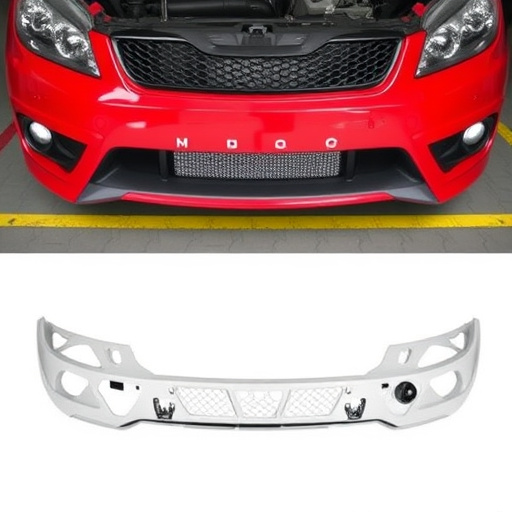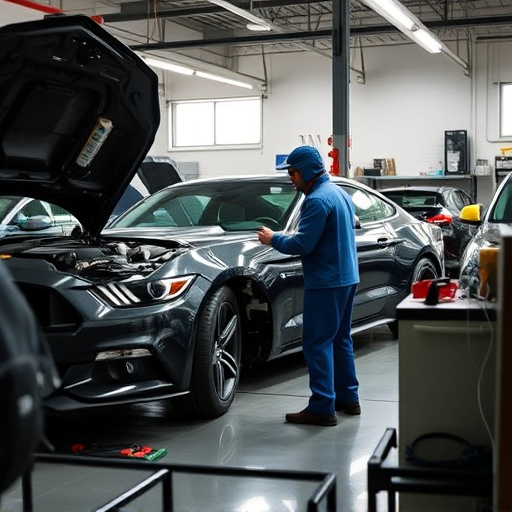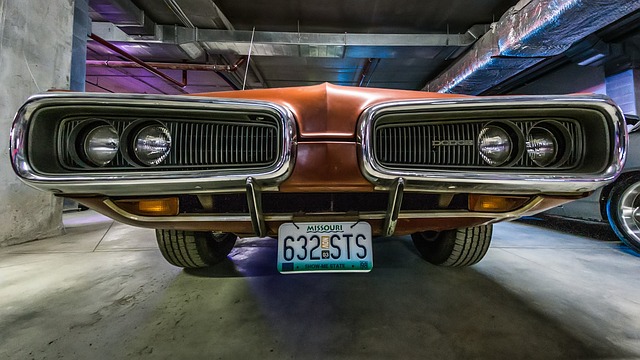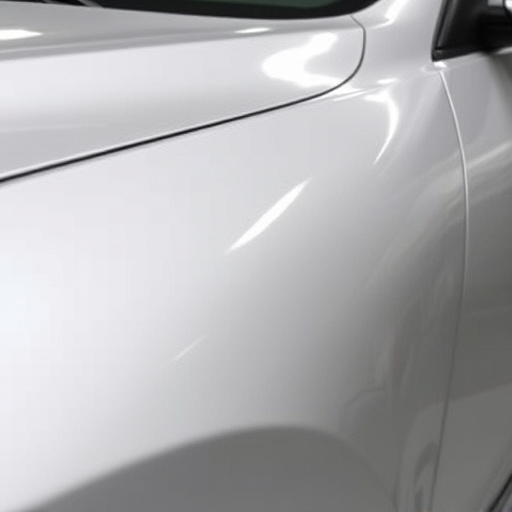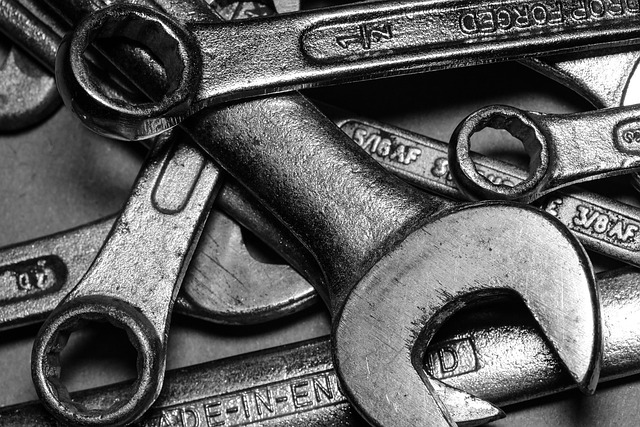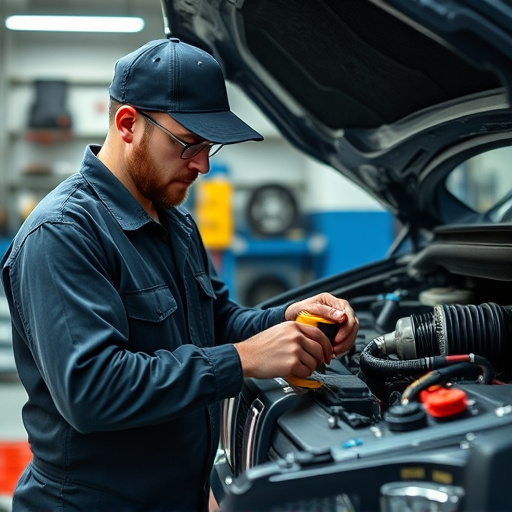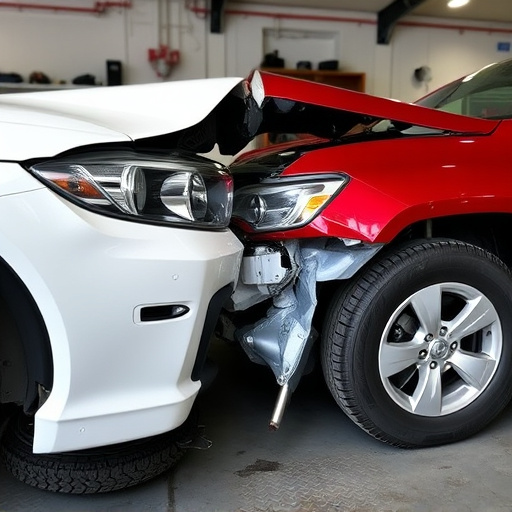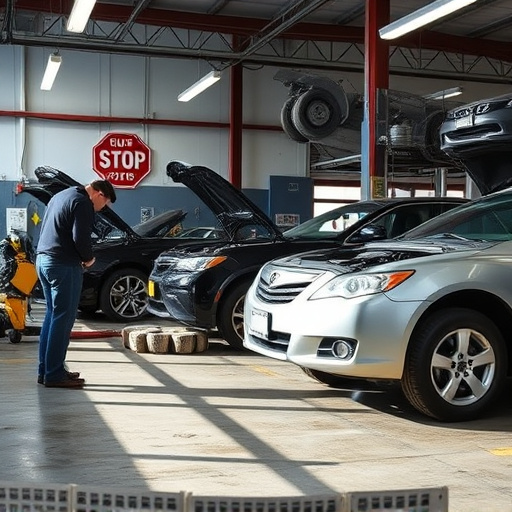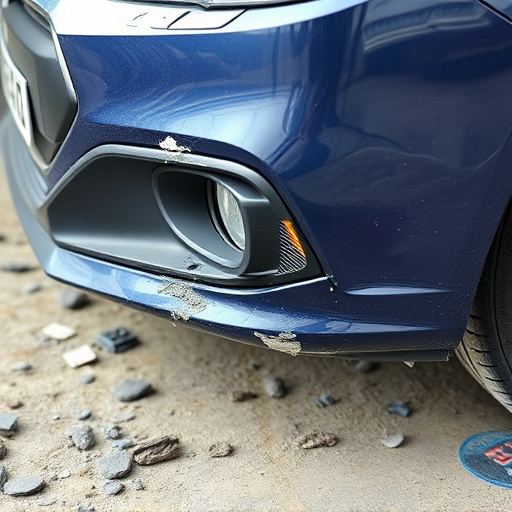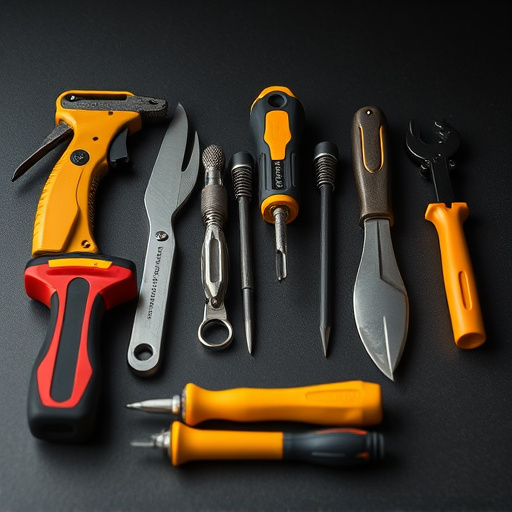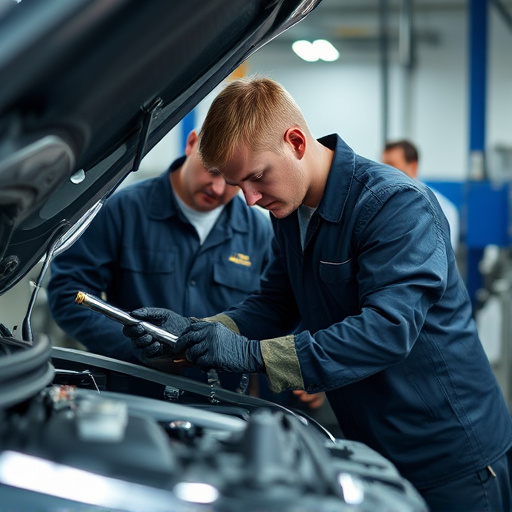Structural adhesives are crucial for automotive bonding, offering high strength and durability in manufacturing and repair. Efficient panel removal requires understanding adhesive characteristics, using appropriate tools like heat guns or chisels, and following a planned process including pre-inspection, cleaning, solvent application, and bond weakening techniques to minimize damage during vehicle body restoration or repair.
Removing panels bonded with structural adhesives can be a challenging task, but with the right approach, it’s achievable. This article guides you through understanding the nature of structural adhesives and their bonding properties, essential for effective removal. We’ll explore critical safety measures to ensure a smooth process, avoiding damage or injury. A step-by-step guide will equip you with practical techniques to separate panels successfully, offering insights into various tools and methods that work best for different scenarios involving structural adhesive applications.
- Understanding Structural Adhesives and Their Bonding
- Tools and Safety Measures for Removal Process
- Step-by-Step Guide to Effective Panel Separation
Understanding Structural Adhesives and Their Bonding

Structural adhesives are a critical component in various industries, including automotive manufacturing and fleet repair services. They offer a powerful bonding solution for connecting materials like metal, plastic, and composite components, making them indispensable in complex assembly processes. These adhesives provide high strength and durability, ensuring structural integrity in demanding applications, particularly within collision repair scenarios at an automotive body shop.
Understanding how these adhesives work is key to effective panel removal. Unlike mechanical fasteners, structural adhesives create a seamless bond by filling the space between surfaces, forming a strong connection without visible signs of attachment. This bonded interface can withstand significant forces, making it crucial for maintaining the vehicle’s overall structural integrity. When removing panels in an automotive body shop, especially after a collision repair, technicians must employ specialized techniques to separate the adhesive-bonded components while minimizing damage.
Tools and Safety Measures for Removal Process

When tackling the removal of panels bonded with structural adhesives, safety should always be your top priority. Protective gear, including gloves, goggles, and a respirator, is essential to prevent skin irritation, eye damage, or inhalation of harmful fumes released during the process. The choice of tools heavily depends on the type of adhesive used—some are more sensitive to heat, while others may require mechanical force for effective removal. A heat gun can be useful for warming up the adhesive and making it easier to scrape off, but extreme caution is advised to avoid permanent damage or unsafe conditions. For stronger adhesives, a chisel or a specialized adhesive remover tool might be necessary, ensuring you apply gentle yet firm pressure to prevent structural damage to the car body restoration or luxury vehicle repair.
In the realm of auto maintenance, understanding the characteristics of different structural adhesive techniques is key to successful panel removal. This involves recognizing the signs of cured adhesives, as some may require a more delicate approach, while others can be tackled with more force. Regular cleaning and lubrication of tools are crucial steps to facilitate the process, minimizing the risk of damage during removal. Effective planning and the right tools will ensure a smoother car body restoration or luxury vehicle repair job, ultimately saving time and resources.
Step-by-Step Guide to Effective Panel Separation

To effectively separate panels bonded with structural adhesives, follow this step-by-step guide tailored for both professional vehicle body shops and collision centers. First, inspect the bond area to identify any visible damage or debris that could interfere with the separation process. Clean the surface thoroughly using compressed air or a soft brush to ensure optimal adhesion during the next steps.
Next, apply a suitable solvent or adhesive remover designed for structural adhesive techniques. These products are specifically formulated to break down and dissolve strong bonds, making panel separation easier. Allow the solvent to saturate the adhesive for several minutes, following the manufacturer’s instructions for the best results. Then, using specialized tools like heat guns or hydraulic lifts, carefully apply controlled heat or force along the bond line to weaken the adhesive further and facilitate clean separation of the panels.
When faced with panels bonded by structural adhesives, a thoughtful approach combining understanding of these strong bonding techniques and proper safety measures is key. By following the step-by-step guide outlined in this article, you’ll be equipped to effectively separate panels while minimizing damage. Remember, safe removal methods are essential for successful panel separation, ensuring materials can be reused or recycled, and preventing costly repairs.

